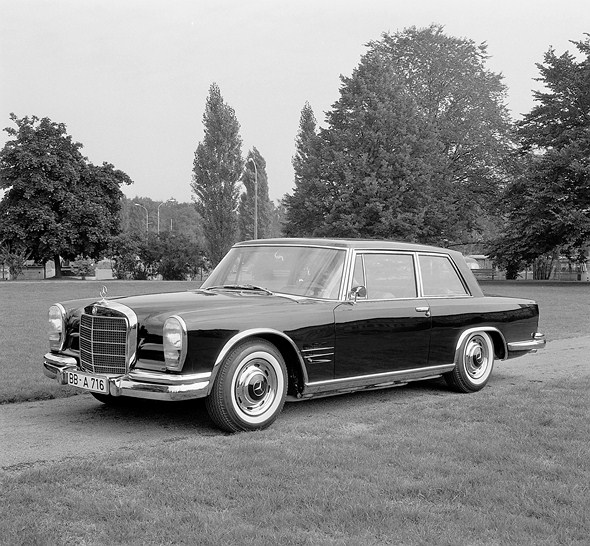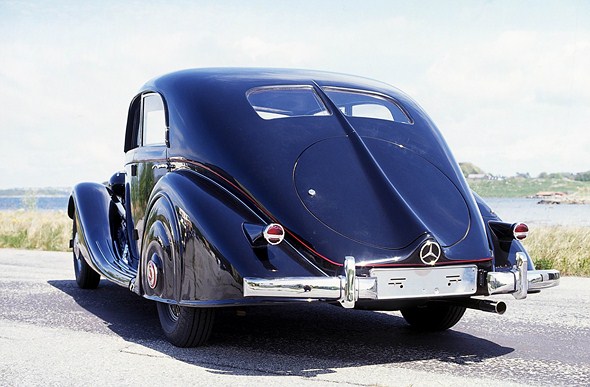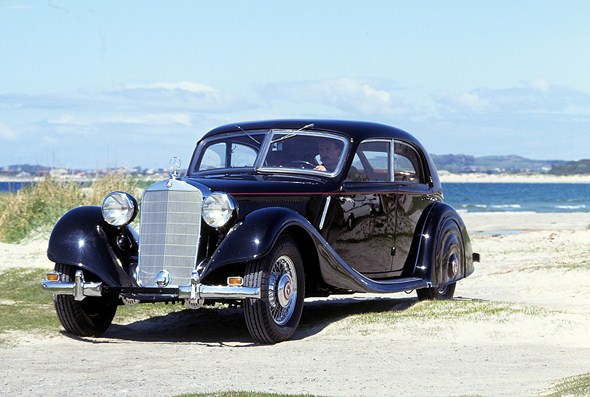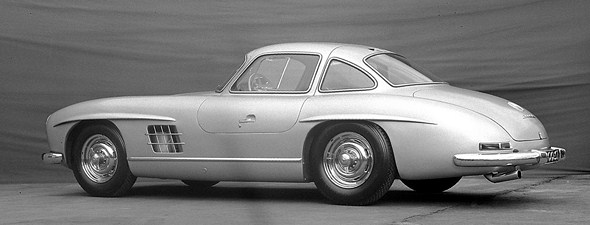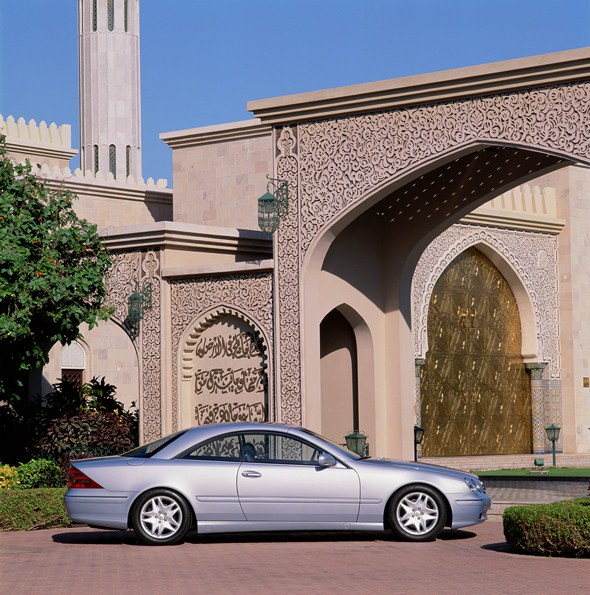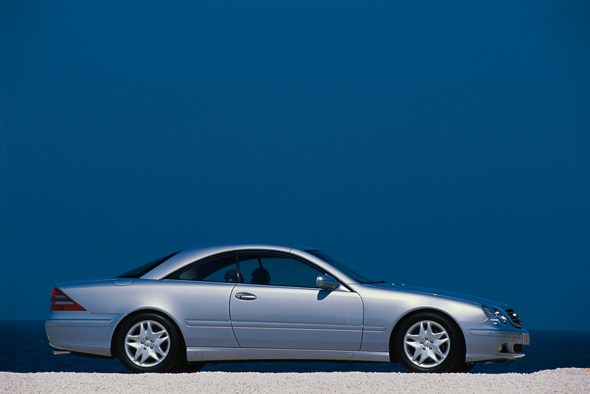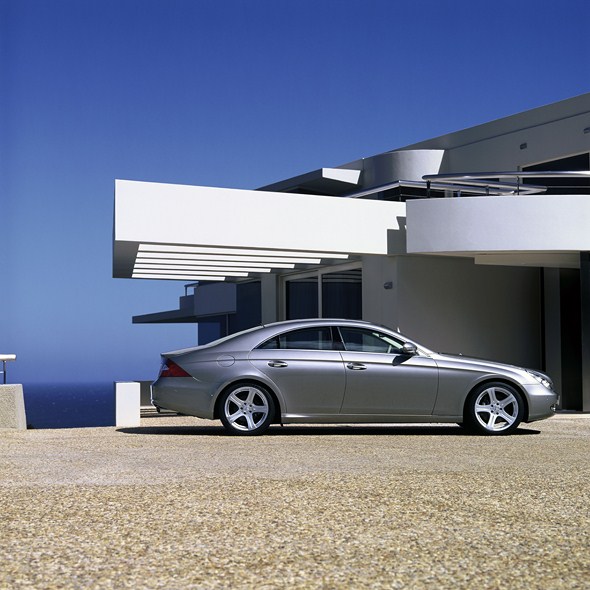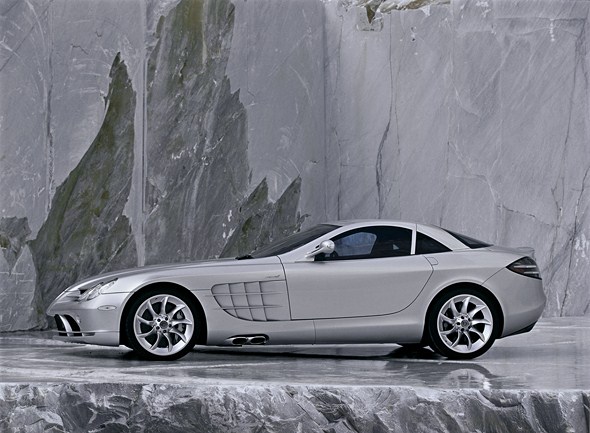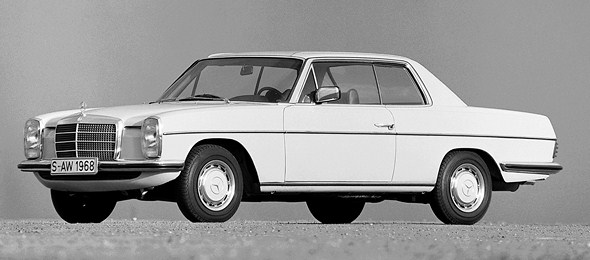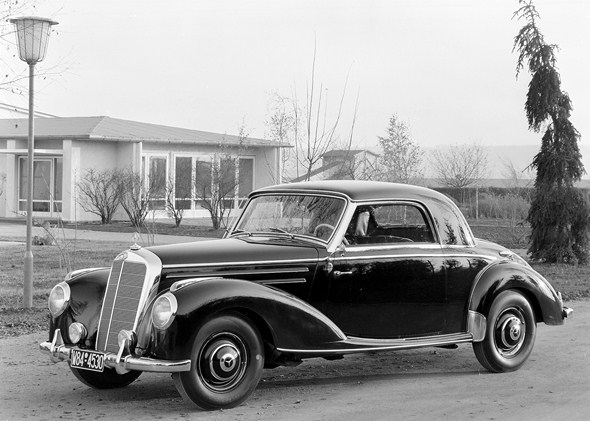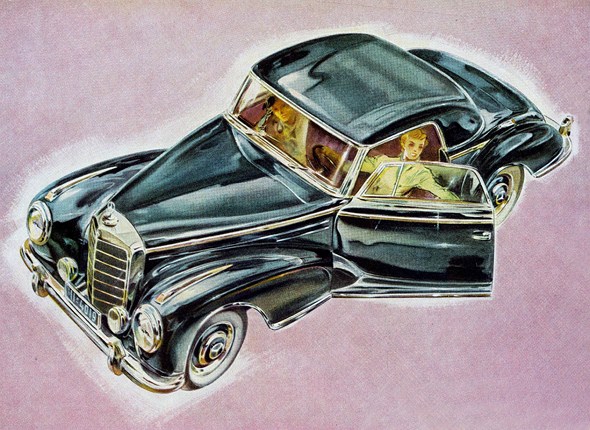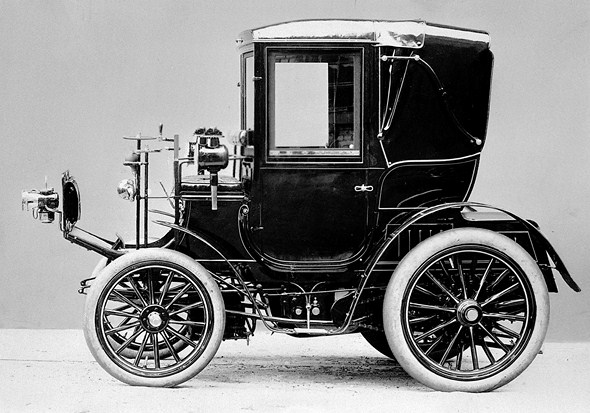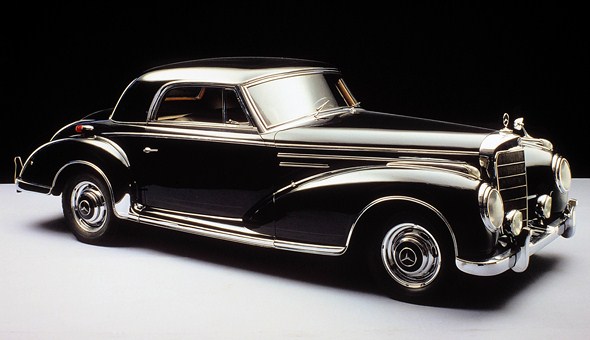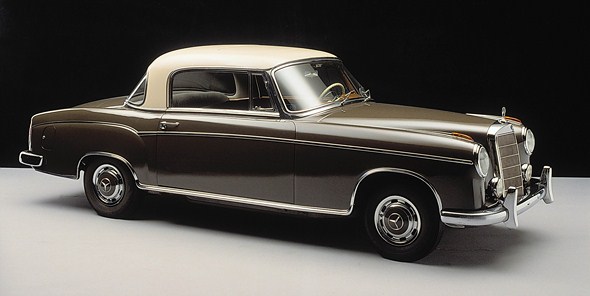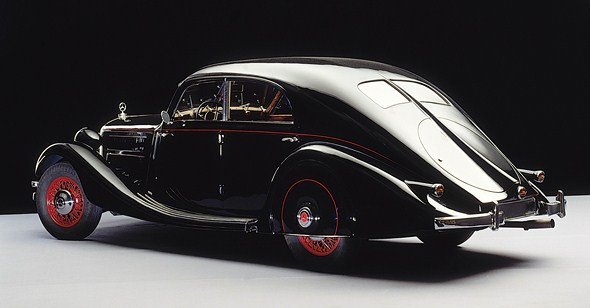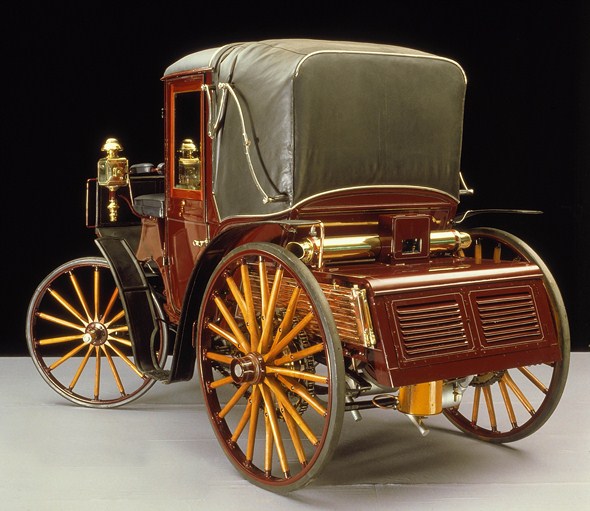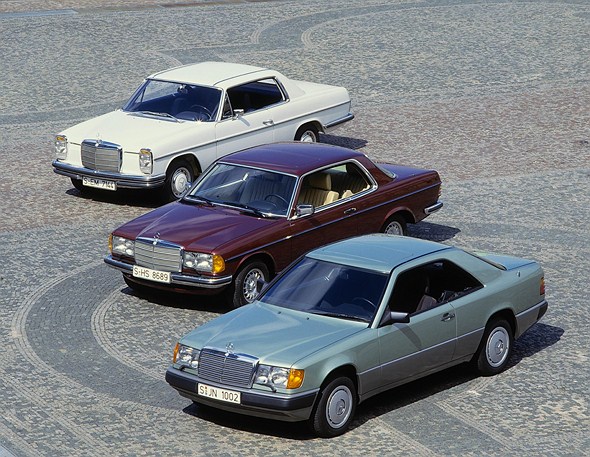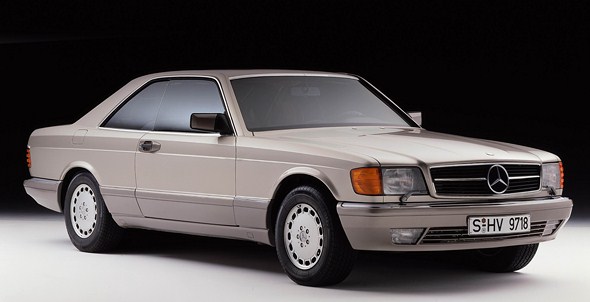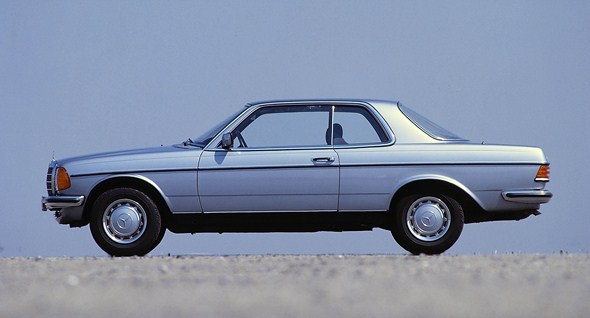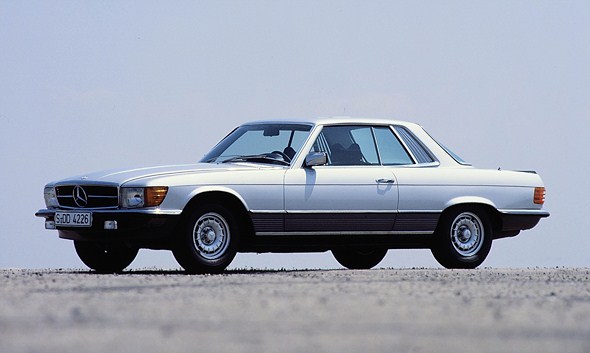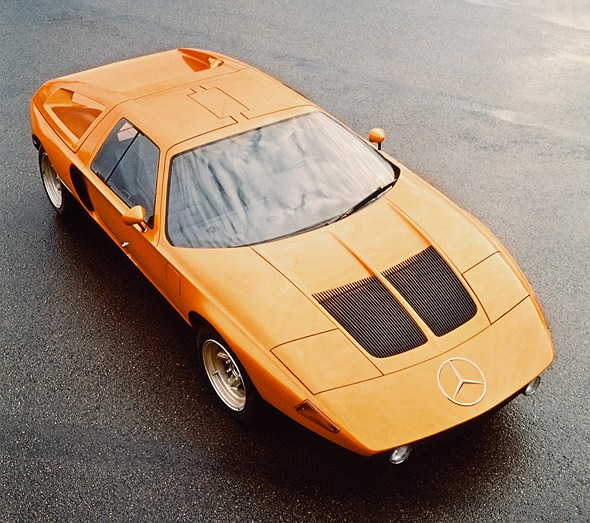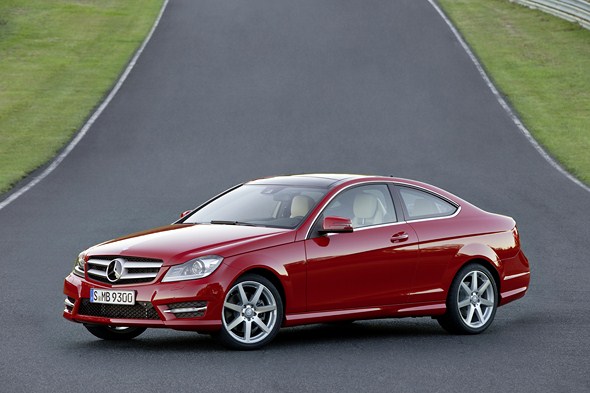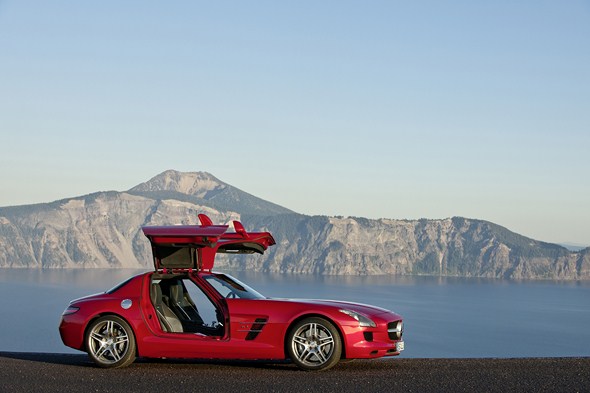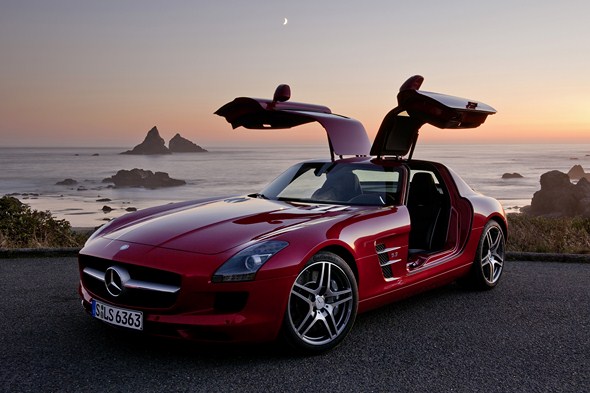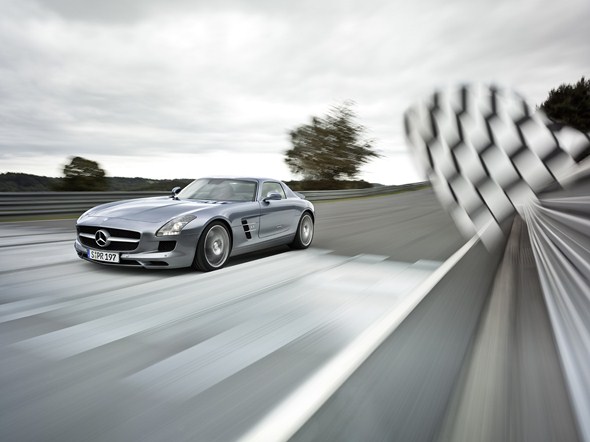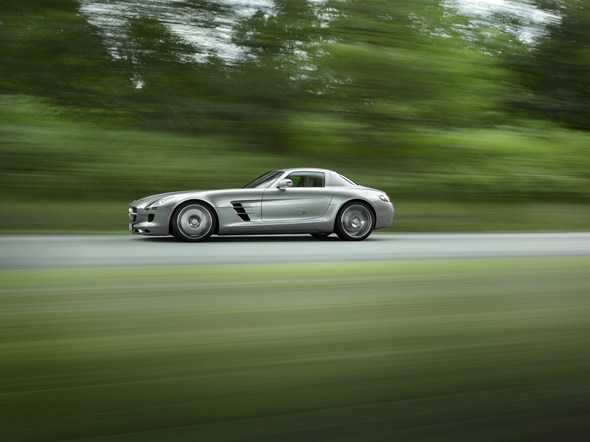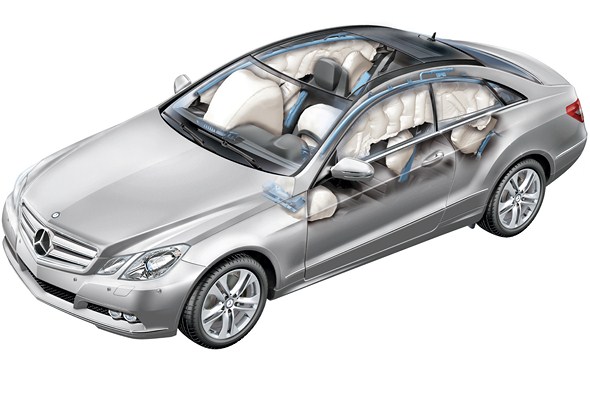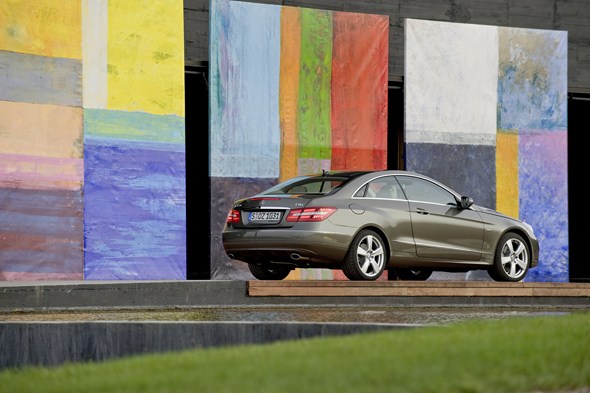

- Coupés make an unambiguous statement about a lifestyle characterised by beauty and elegance
- Mercedes-Benz coupés are classics in their own lifetime
Stuttgart – The coupé is an exclusive body form. This was true even in the days of the horse-drawn carriage, when the coupé – presumably so-called because it resembled a four-seater carriage with its front end cut-off (French: “coupé”) – offered two seats in the comfort of the cab with the coachman seated up front in the open box seat. People who chose this mode of travel clearly liked to demonstrate a sense of style and individuality.
“Coupés from Mercedes-Benz have always embodied elegance on four wheels,” says Michael Bock, Head of Mercedes-Benz Classic. “Whether today, 40 years ago or a century ago – our coupés are legends of the eras in which they were built.”
The early automobiles borrowed heavily from various styles of horse-drawn carriage. The coupé retained a strong focus essentially on two people travelling in style. And since transportation in a closed two-seater was a uniquely cultivated form of travel, coupés were very often characterised by unusual lines.
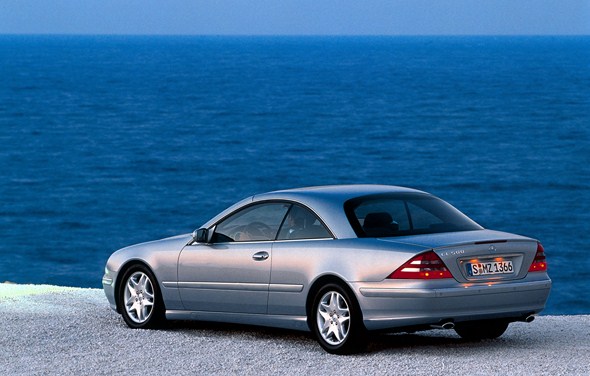
To this day the coupé typifies an exclusive form of transportation.
Mercedes-Benz history offers coupés in a variety of designs. The Benz Coupé of 1895 and the Daimler Coupé of 1897 can barely conceal their relationship to the horse-drawn carriage.
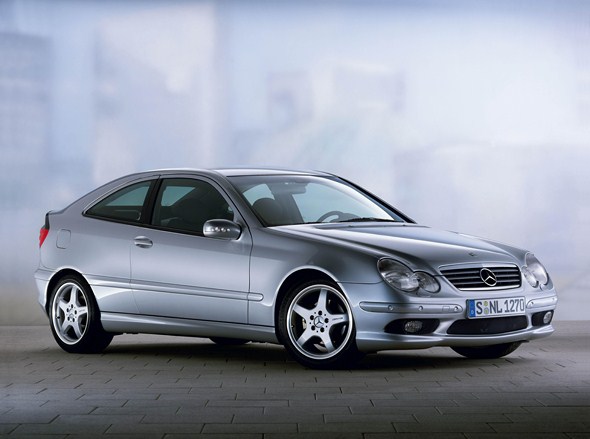
They established two lines of automotive coupé tradition: the Daimler Coupé of 1897, which in addition to the closed two-seater passenger cell featured the familiar open box seat borrowed from carriage design, is considered the grandfather of so-called city coupés, which were common until the 1930s and also offered an open driver’s seat.
As a two-seater, the Benz Coupé of 1895 was a vehicle for the self-driving “gentleman driver”. That made it the ideal precursor to the two or four-seater coupés with interior steering wheel, which became increasingly popular from the 1930s onwards.

But in the early days of motoring, closed vehicles such as saloons and coupés were the exception rather than the rule. Indeed until well into the 1930s, manufacturers and buyers more often went for open variants, particularly where more exclusive models were concerned. Not until the modern age did the coupé establish itself as an exclusive yet iconoclastic automotive body form – for two or four occupants.
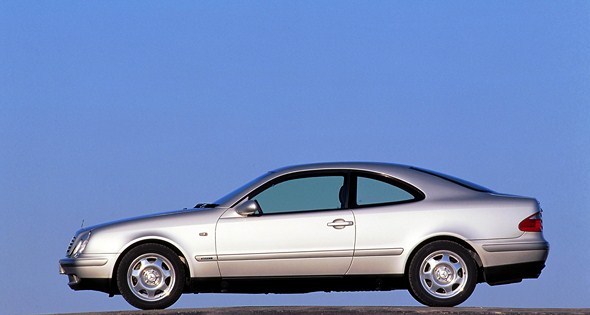
Flowing lines for a dynamic appearance
The term coupé has evolved and grown over the decades. Early coupés, for example, generally only had space for two people; since the 1950s, however, they have more usually had four seats. But the body incorporated a number of basic features that persist to this day.
A coupé generally has very low, flowing lines which create a stretched silhouette. It often dispenses with the B pillar altogether, and the C pillar slopes gently into the tail. The roof is generally shorter than in the case of a saloon, and curved at the rear. The side windows are usually frameless.
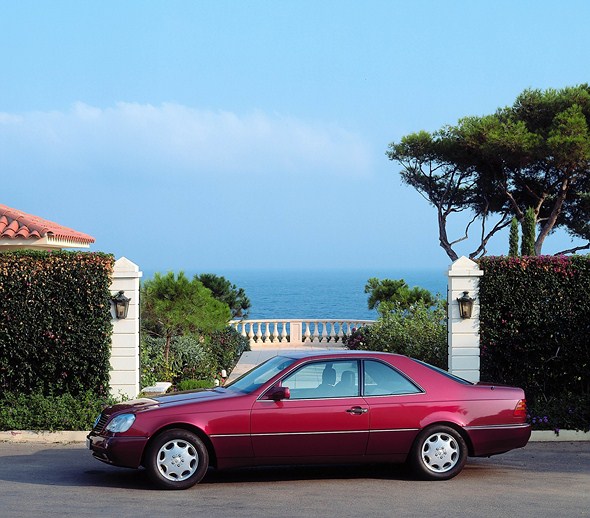
Nowadays, owning a coupé and enjoying utility value are no longer mutually exclusive aspirations. Although many coupé enthusiasts would contest the fact, even in a coupé a spacious boot, folding rear seat bench and ski bag are popular equipment features. After all, the body does not reveal outwardly all the other things needing transportation in addition to the passengers.
Coupés by Mercedes-Benz and predecessor brands carry the self-image of this exceptional vehicle type in every detail – whether in the C-Class Coupé, the E-Class Coupé or the CL-Class. In this way the various coupés have smoothly been taking up their place in the Mercedes-Benz product range, adding a touch of sporting elegance to the brand image.
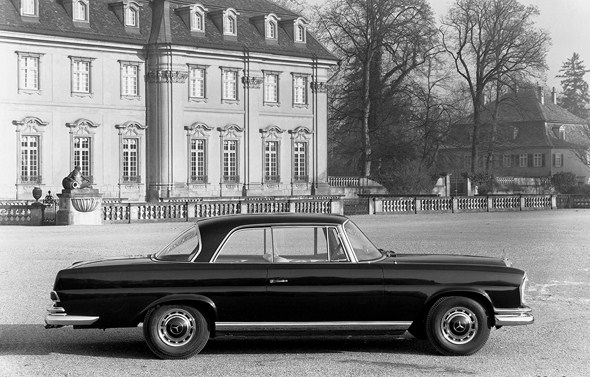
The “Sindelfingen body” prevails
- Stylish and elegant cars supplied by the company’s own body workshop
- Variants such as the motorway courier are wheeled sculptures of timeless elegance
Throughout the 1920s and 30s, Mercedes-Benz offered a variety of vehicle models where the designation primarily characterized chassis and engine; for these a variety of body variants were then available ex factory, often with up to ten or more different designs.
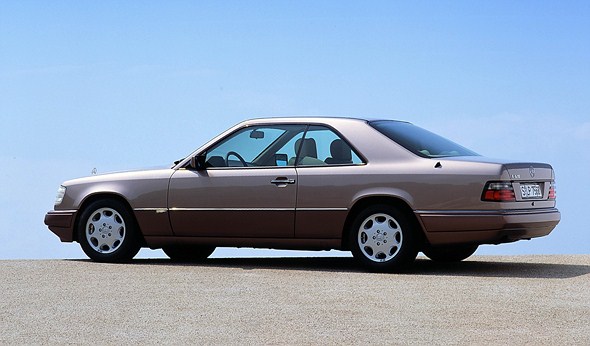
At the same time, it was the age of the coachbuilder in automotive design, with many owners having customized bodies fitted to a chassis to meet their own specifications. Eventually the company’s own “Sindelfingen body” gained general acceptance.
It reflected not only the stylistic self-assurance of the vehicle owners, but also of the Mercedes-Benz designers – those ‘stylists’, as they were then officially titled, who created mobile sculptures of timeless elegance.
Not every series featured a coupé; but in most cases there was at least one variant aimed at a similar category of buyers. There was the Mercedes-Benz 290 (W 18 series), for example, built in the mid-1930s, which in the long-wheelbase version with streamlined body had the appearance of a coupé – except it had four doors providing access to the interior.
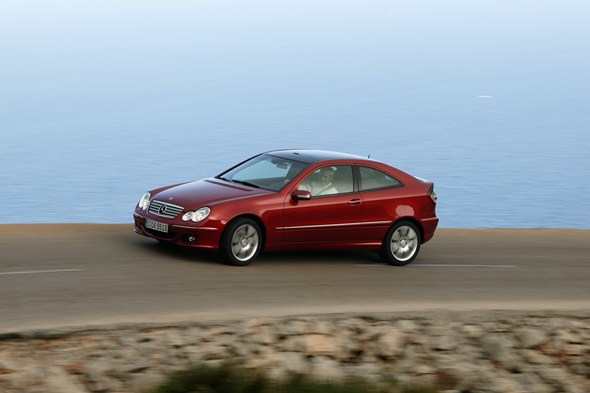
Decades later the CLS (C 219 series, market launch 2004) was to revive a similar principle, creating an even more coupé-like impact with its low, stretched roofline. The sports sedan, very popular in competitions, was available in smaller series such as the 130 model (W 23) or the 230 (W 153) – both two-door versions.
One body design to enjoy a certain star status with coupé genes in the 1930s was that of the motorway courier, created for the luxury 500 K (W 29) and 540 K (W 29) models.
The design took its name from the new high-speed motorways that were under construction in Germany at the time; compared with today, of course, these new long-distance roads had much less traffic, and with its streamlined body the motorway courier could occasionally be seen almost literally flying into the distance.
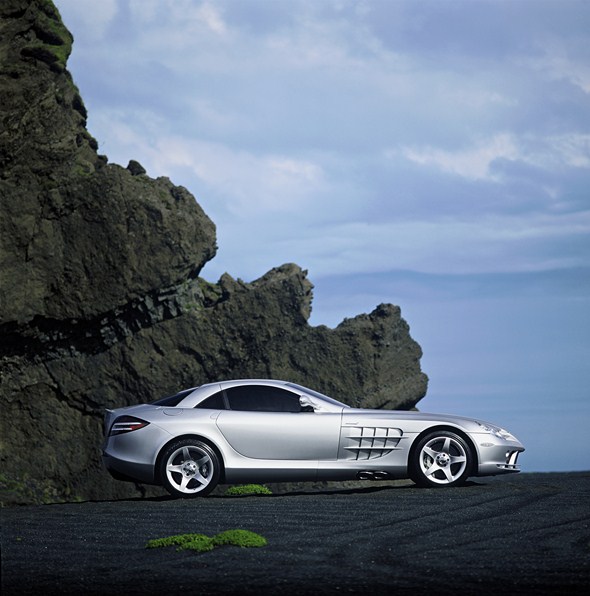
The motorway courier was the last word in state-of-the-art design – not to mention exclusivity, since anyone able to afford such a vehicle at the time certainly enjoyed grand appearances and a mobile lifestyle. A popular choice was to use as a basis a chassis with the engine set back, since with a lengthened engine hood the front end created a more elongated appearance, thus emphasizing the vehicle’s coupé character. In most cases the rear wheels also had fairings.
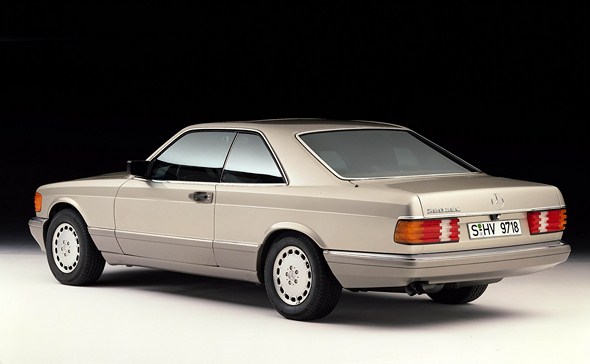
Any motorway courier remains an object of fascination to this day. One world-famous model is the 540 K motorway courier of 1939 owned by Arturo Keller, one of only few units of an already extremely rare species to have survived.
Keller’s flawless model continues to thrill audiences at classic car events and regularly garners trophies, as in 2006 at the Concours d’Elegance in Pebble Beach, California/USA, where it was awarded the prize for most elegant closed vehicle.
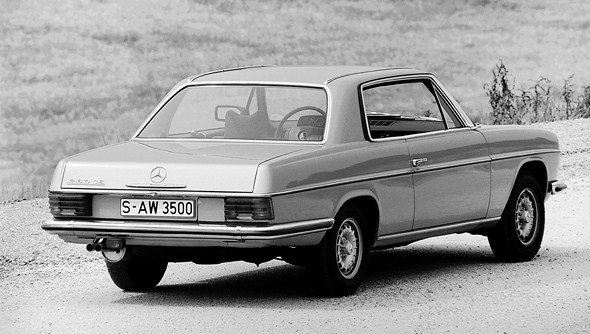
Two doors give access to four seats. A novelty of the motorway courier that featured in the predecessor model, the 500 K motorway courier – and is nowadays a standard feature of coupé design – is the curved rear side window that emphasized the rapidly tapering rear end. The 540 K was also available as a classic coupé with two seats. There was even also a so-called combination coupé with two interchangeable roofs.
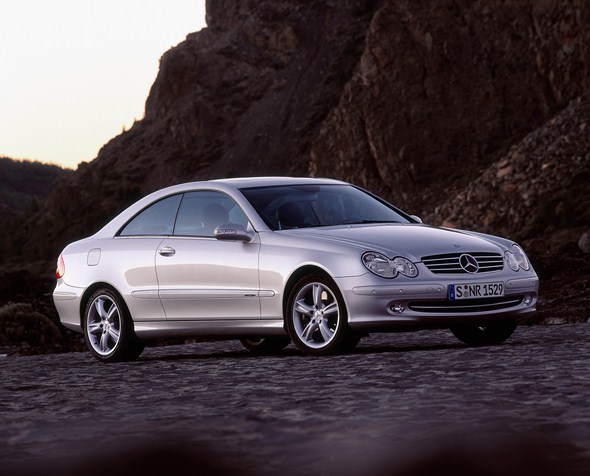
Coupés in every class
- Whether compact, mid-sized or luxury class, coupés enhance the product portfolio of Mercedes-Benz
- Mercedes-Benz CLS: The first four-door coupé made its debut in 2004

After the Second World War the coupé became a permanent feature in particular of the Mercedes-Benz mid-series, as well as of its premium-class models. The forerunners of the CL-Class include vehicles such as the 300 S coupé (W 188, 1952 to 1955) and the coupés of the 180 and 128 “three-box body” series, whose self-supporting bodies were fully in tune with the tastes of the day.
1961 saw the launch of coupés in the premium-class 111 series, then the following year that of the 112 series, all of them highly sought-after vehicles today.
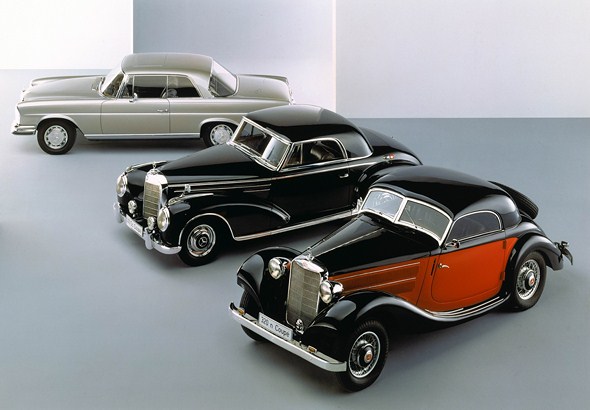
An intermediate step in the tradition of great Mercedes-Benz coupés were the coupés of the 107 series. For in the case of the C 107 the coupés were based not on the four-door premium class saloons but on the roadsters of the SL-Class.
The C 126 successor series on the other hand offered four proper seats, a feature that has been continued to the present day in the C 140, C 215 and C 216 series.
In the Mercedes-Benz mid-series there has been an almost continuous coupé tradition since the late 1960s, perpetuated today by the E-Class Coupé from the C 207 series. The first mid-series coupé was the 114 series, more familiarly known as the Stroke Eight, since internally it bore the abbreviation “/8” to denote the year of its appearance, 1968.
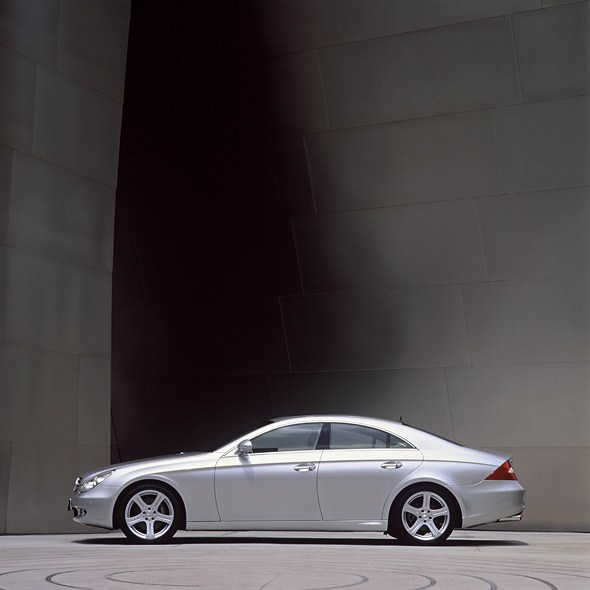
The car was also successfully exported to North America. The 123 series (1977 to 1985) followed seamlessly on and even offered a first-ever diesel-powered coupé – initially reserved for North American customers with a view to improving Corporate Average Fuel Economy there.
The coupé tradition was continued by the 124 series from 1987 to 1996. This link was established by the first CLK Coupé (C 208 series), launched in 1997 and built until 2002. For this model Mercedes-Benz sounded out the market with the aid of a coupé study, presented in 1993 at the Geneva Motor Show and revealing to an enthusiastic public the brand’s new “four-eyed” face.
Built from 2002 to 2009, the CLK series (C 209) seamlessly built on the success of its predecessor. This was then continued by the E-Class Coupé C 207, awarded the GOOD DESIGN® Award and the German Design Award as a member of the current E-Class.

In the C-Class, Mercedes-Benz presented the dynamic Sports Coupé in fall 2000 which was followed in 2008 by the CLC; both bear the same series number CL 203. At the beginning of 2011, the C-Class Coupé (C 204) made its debut and rounded off the model portfolio.
The presentation of the Vision CLS at the IAA Frankfurt Motor Show in 2003 caused a sensation and gave the motoring public a foretaste of the Mercedes-Benz CLS (C 219), which appeared the following year. This car combined the best of two worlds, offering the spaciousness and four doors of a sedan, while at the same time exhibiting its clear coupé roots with a skilfully designed body.
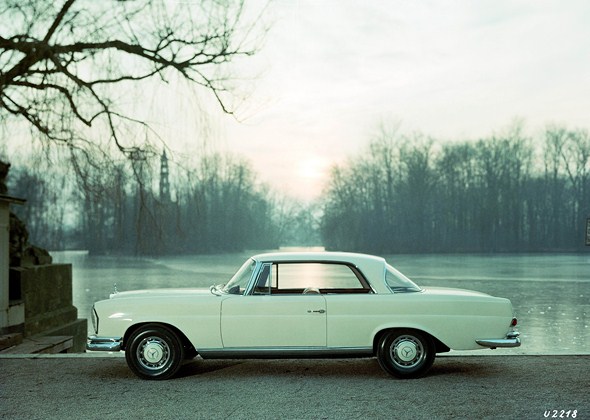
The CLS quickly established itself as a modern automotive icon. And it created an entirely new market segment. After the success enjoyed by Mercedes-Benz, other carmakers with four-door coupés followed in its wake. In fall 2009, the second generation of the CLS (C 218 series) made its debut at the Paris motorshow.
No review of the coupé history of Mercedes-Benz would be complete without mention of four exceptional sports coupés. In 1954 came the 300 SL (W 198). Not just the gullwing doors and timeless body design place this car in a class of its own in the automotive world – the whole vehicle remains today both a dream car and a dream coupé in one.
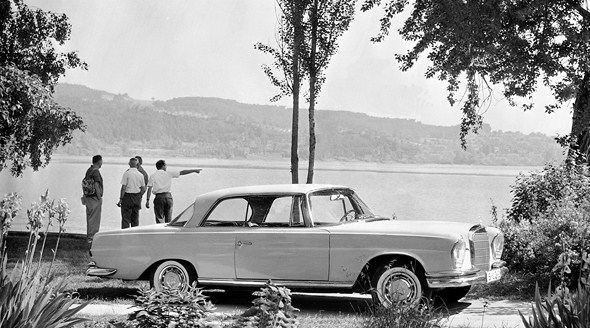
Then in 1969 the company presented the C 111 experimental car, initially as a test vehicle for the Wankel engine. This coupé unleashed a storm of interest and Mercedes-Benz even received numerous blank checks from potential customers. But the C 111 never went into production.
Although the Mercedes-Benz SLR McLaren (199 series) of 2003 was no direct descendant of the 300 SL, it still bears the genes of the Gullwing. For it is both a dream sports car and an original coupé design. In both cases, the roadster versions were later additions.
And finally, 2010 saw the arrival of the Mercedes-Benz SLS AMG to continue the history of Mercedes-Benz supersports cars. The elegant sportiness of this extraordinary coupé (C 197 series) ignites both passion and enthusiasm.

Every Mercedes-Benz coupé is a classic, whether it has historic roots or hails from the current model portfolio. These models perfectly round off the brand’s automotive product range and target a clientele for whom style and elegance retain a particular importance. In this way Mercedes-Benz coupés are a lifestyle statement on wheels.
